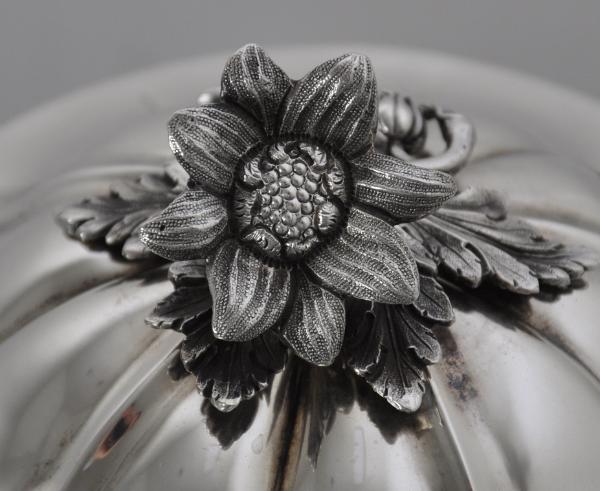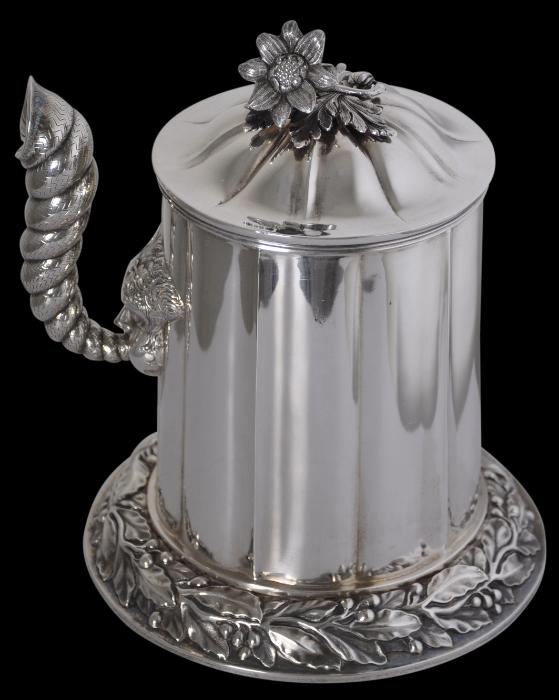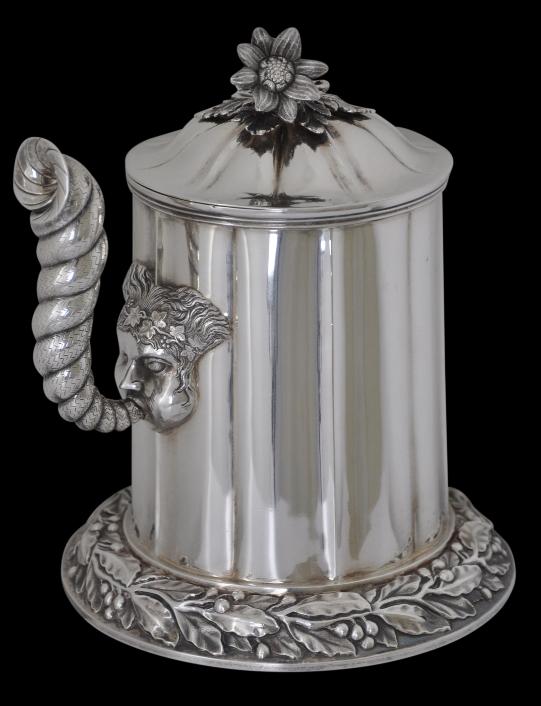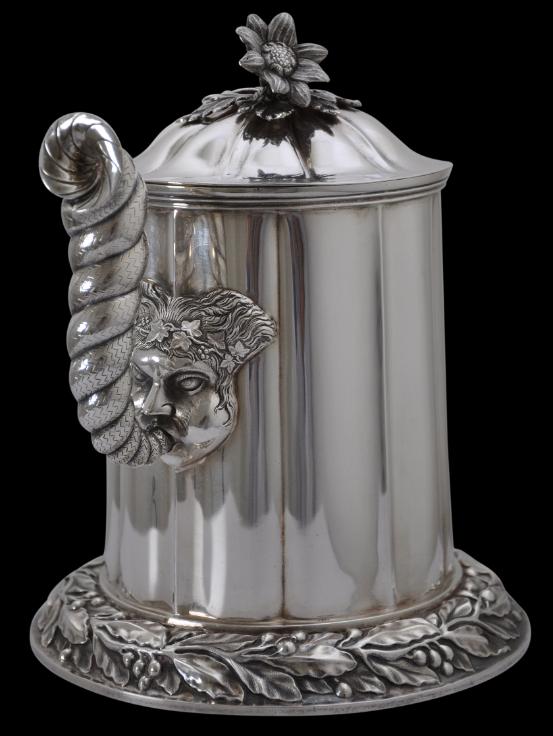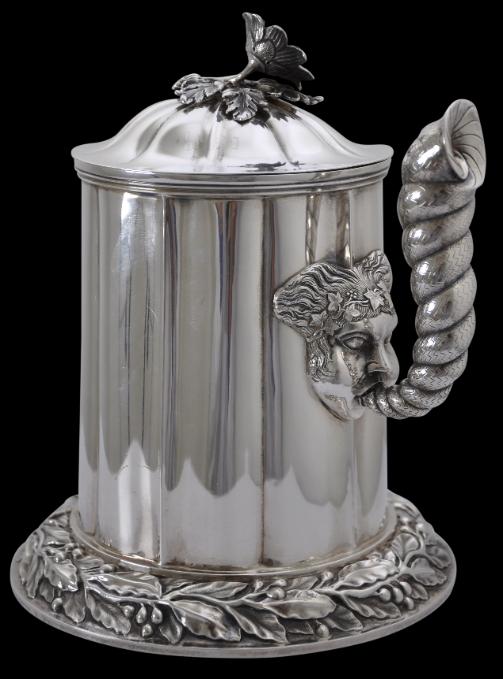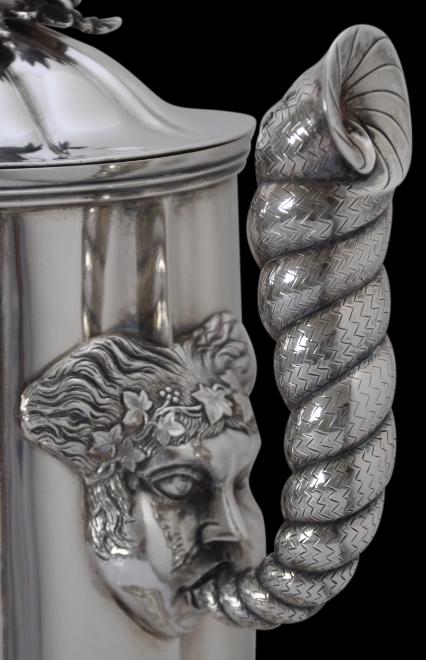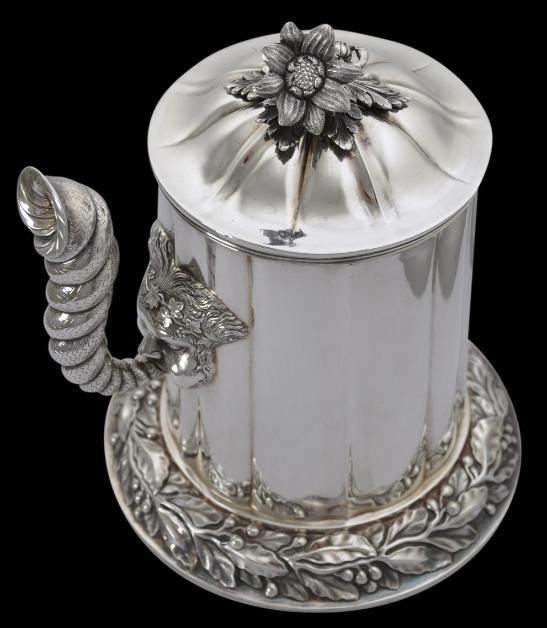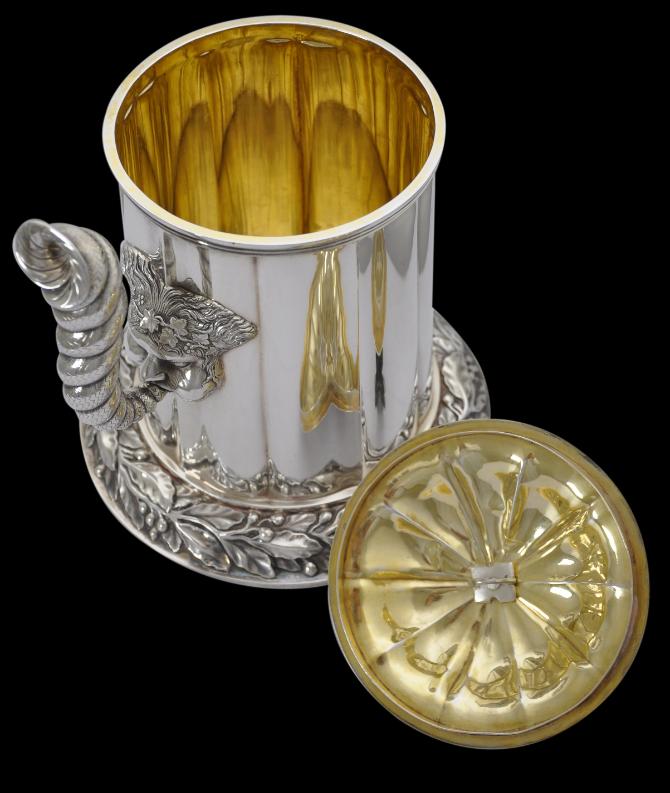
Hamilton & Co Calcutta Indian Colonial Silver Tankard
Unusual & Monumental Colonial Silver Tankard by Hamilton & Co.
Calcutta, India
circa 1840
height: 23cm, weight: 1,259g
This extraordinary solid silver vessel by the colonial Indian silvermiths Hamilton & Co. based in Calcutta, most probably is unique. It is likely to have been a one-off commission. Certainly nothing like it has been published. It is likely to have been intended for use as a tankard, or perhaps as a biscuit barrel to be passed around after dinner. Certainly, the lid fits in an airtight fashion.
It comprises a wide, flared foot finely chased with an extravagant border of laurel leaves. From this rises the body of the vessel which, other than gently gadrooned and crenulated sides is of plain silver.
A fabulous handle which appears to be in the form of a cornucopia protrudes from the side, being emitted from the mouth of a Green Man image with puffed-out cheeks and band of ivy across his flowing hair.
The lid is domed and gadrooned in the style of the base. It is topped with an extremely finely rendered floral and leaf spray.
The interiors of both the vessel and lid are gold plated.
The use of the Green Man motif is highly unusual and possibly unique in Indian colonial silver. The Green Man motif has its origins in medieval England. Alternative (and more traditional names) are ‘leaf man’, ‘foliate head’ and ‘leaf mask’. But its use as a motif seems to have fallen out of favour in the mid-sixteenth century and then had a revival during the 19th century (Hayman, 2014, p. 6). Often such motifs were found chiselled in stone of the exteriors of churches and other public building, or carved in oak in the interiors. The precise reason for the motifs evolution is now obscured. Some have suggested that it has pagan origins but there is no evidence of its use in pre-Christian times, at least not in England.
Hamilton & Co. used a variety of maker’s and other marks in place of proper assay or hallmarks that would have been used in England and Scotland. The sequence of marks on this piece seems to have been used from approximately 1820 to 1850. The marks are what is believed to be a thistle, an urn, the initials ‘H&Co.’, an elephant and the letter ‘A’. Wilkinson (1999, p. 53) mentions that the urn mark tends to have only appeared on more important pieces and was used from 1815 to 1850.
Hamilton & Co. was founded in Calcutta around 1815. According to Wilkinson (1999, p. 53) it operated from premises at 7 Old Court House Street in Calcutta for at least some of its life.
The vessel is in excellent condition.
References
Hayman, R., The Green Man, Shire Publications, 2014.
Wilkinson, W.R.T., Indian Silver 1858-1947, 1999.
Provenance:
UK art market
Inventory no.: 3506
SOLD

